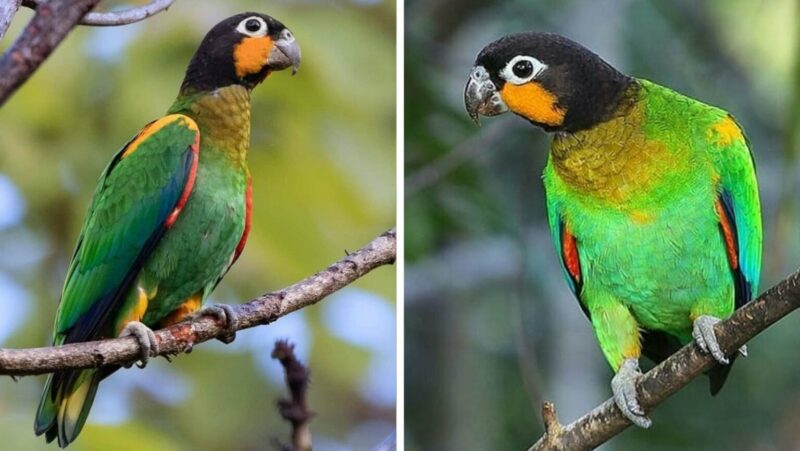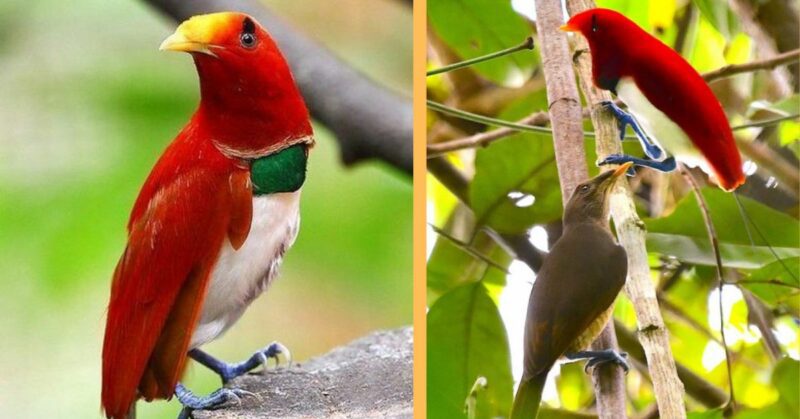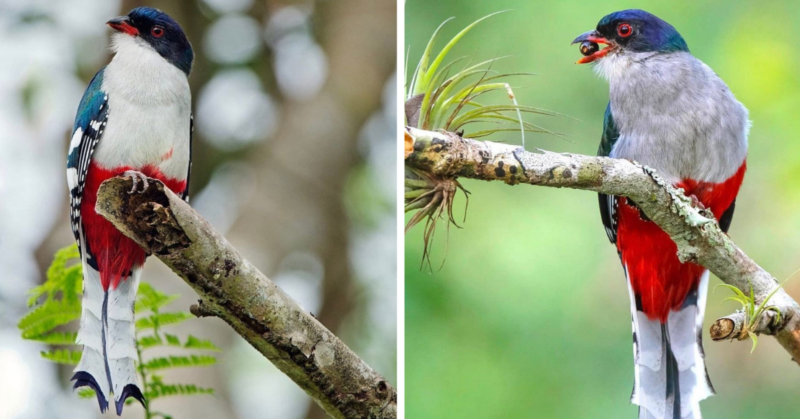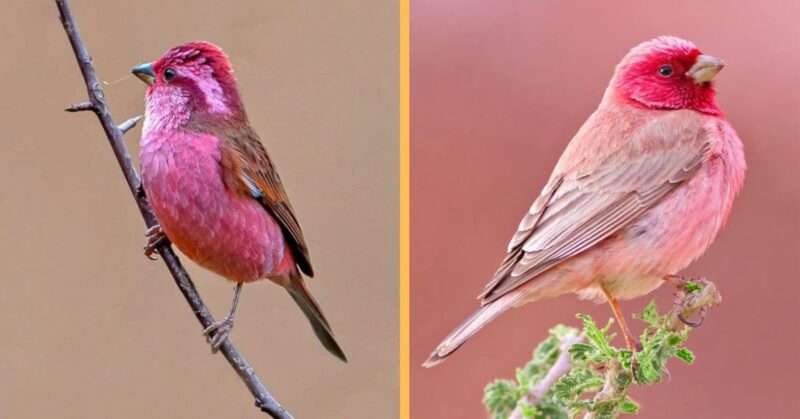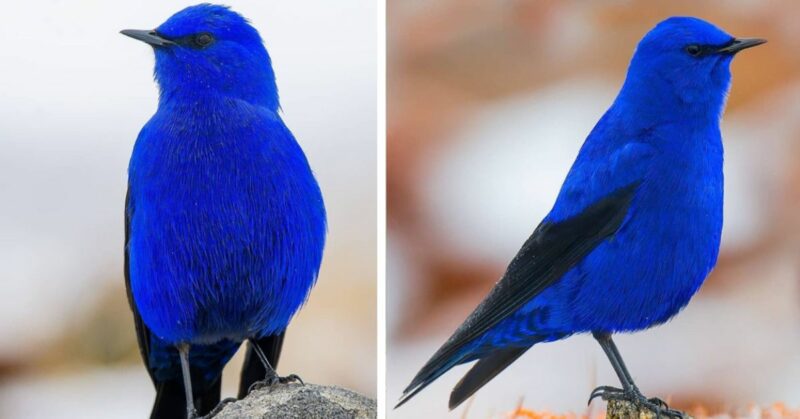A very rare bird with a bright yellow and olive green suit, topped with a vivid fluorescent tie-dyed face and fleshy bill!
MEET SCHLEGEL’S ASITY
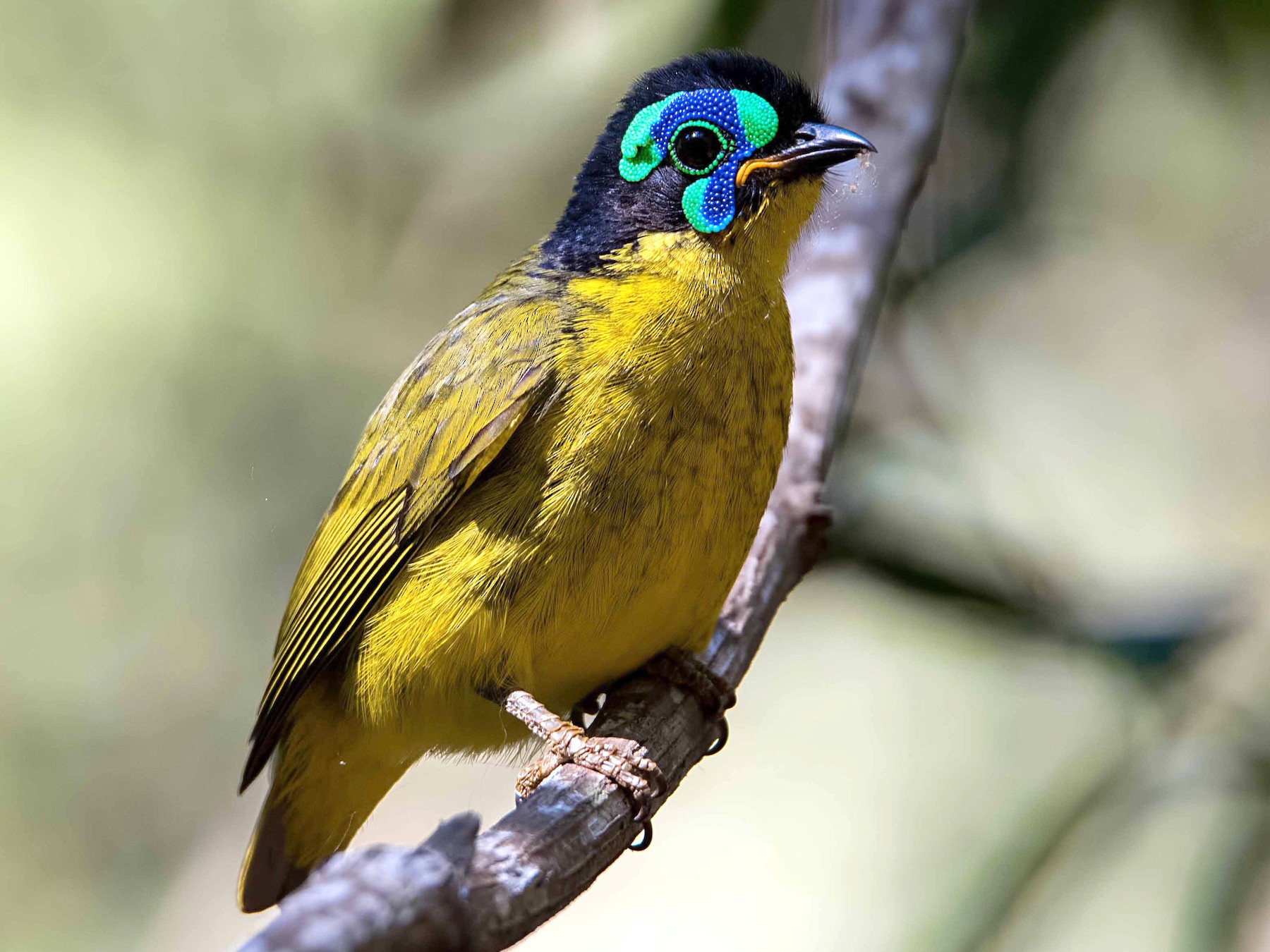
Schlegel’s asity (Philepitta schlegeli) is a species of bird in the Philepittidae family. During the breeding season, the male of this species has bright yellow upper parts and mantle, the rest of the body is olive green. Its underparts are yellow, with an olive-green tinge, and the rump is dark grey. Its head is black with a very vivid, featherless, bright blue and green area around each eye. Its bill is black with an orange-yellow tinge. His eyes are brown and his legs are brown.
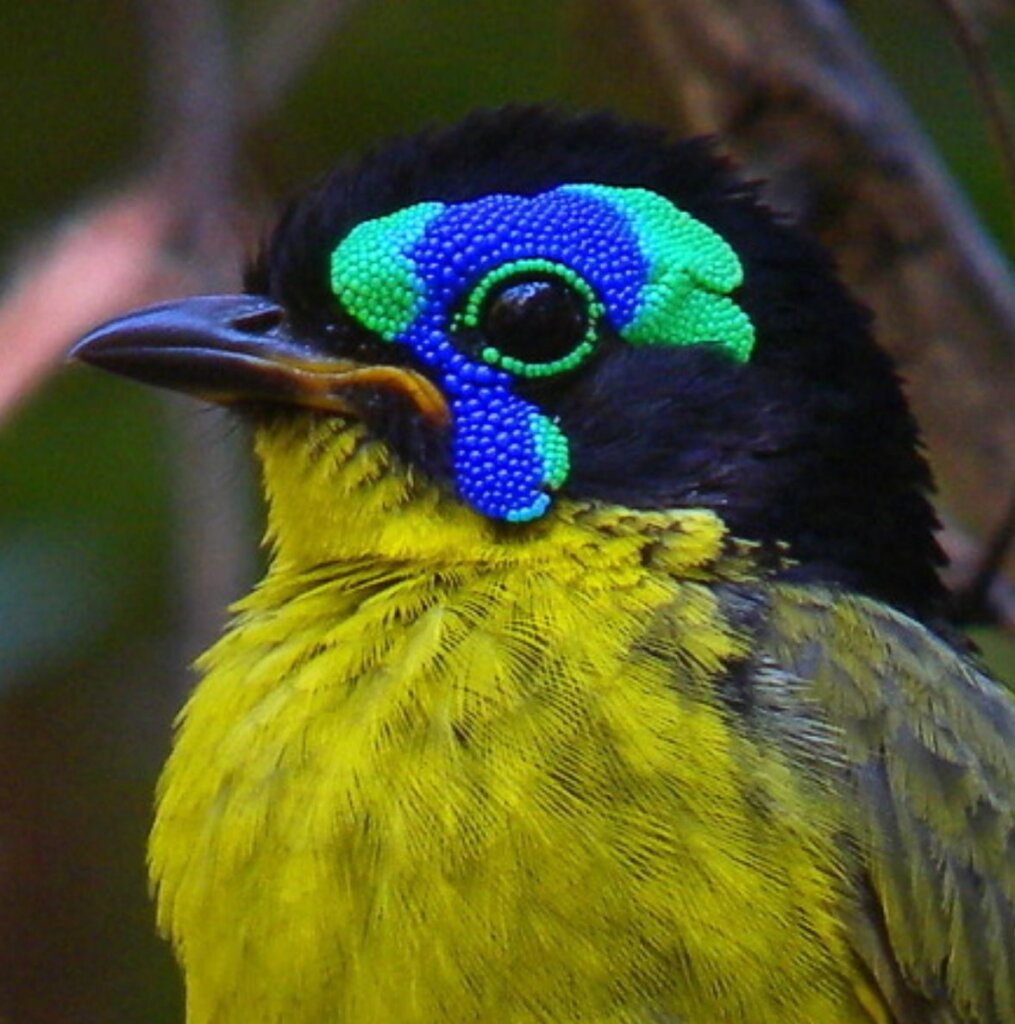
Unlike the male, the female resembles the non-breeding male, more olive above and white to yellow-olive below.
Similar to the women of the younger generation.
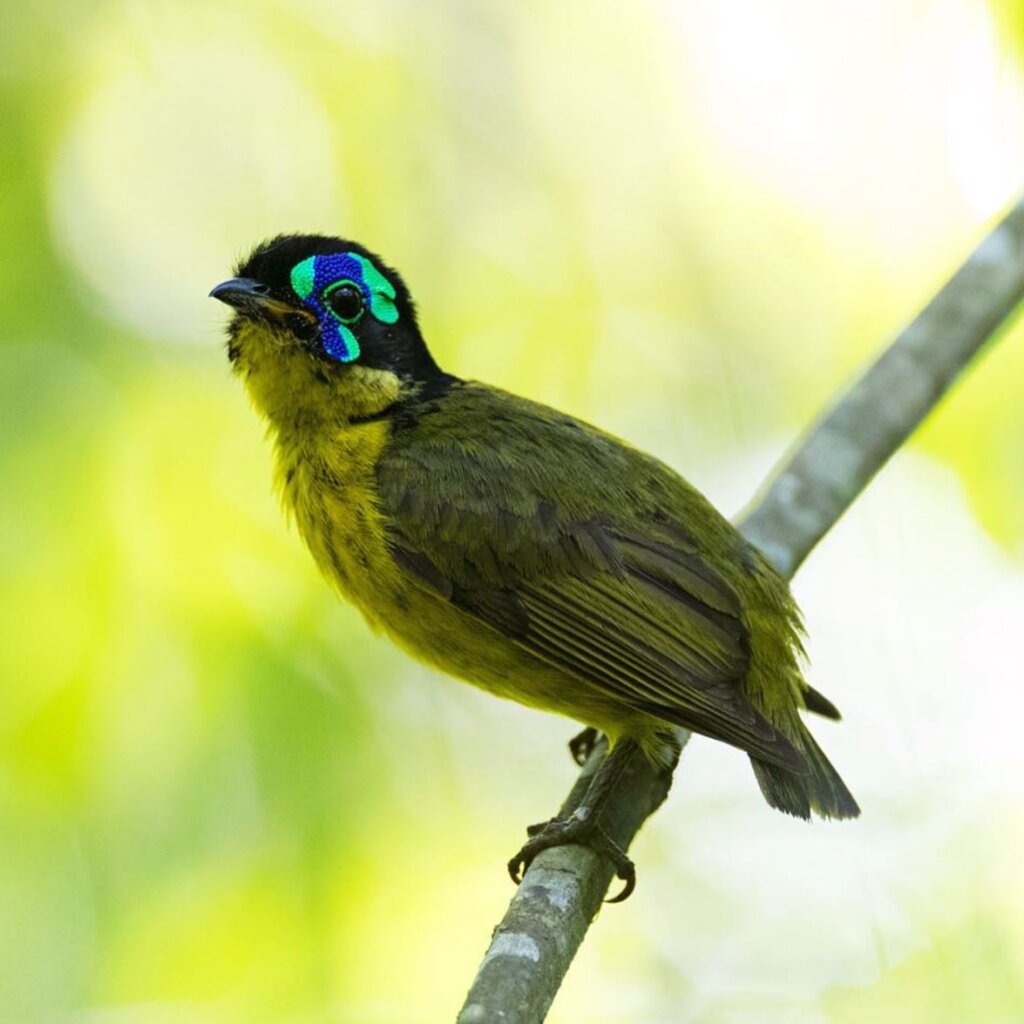
The bird is native to Madagascar where it can currently be found in the northern, northwestern, and western regions of the island nation.
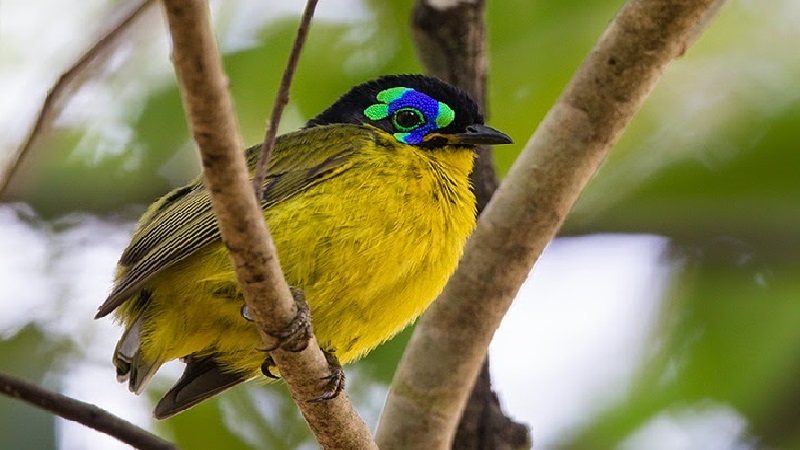
Schlegel’s asity frequents seasonally dry rainforest near humid or sheltered areas at an altitude of about 800 m.
In its range, the bird feeds mainly on small fruits during the rainy season, but also feeds on nectar and insects during the dry season.
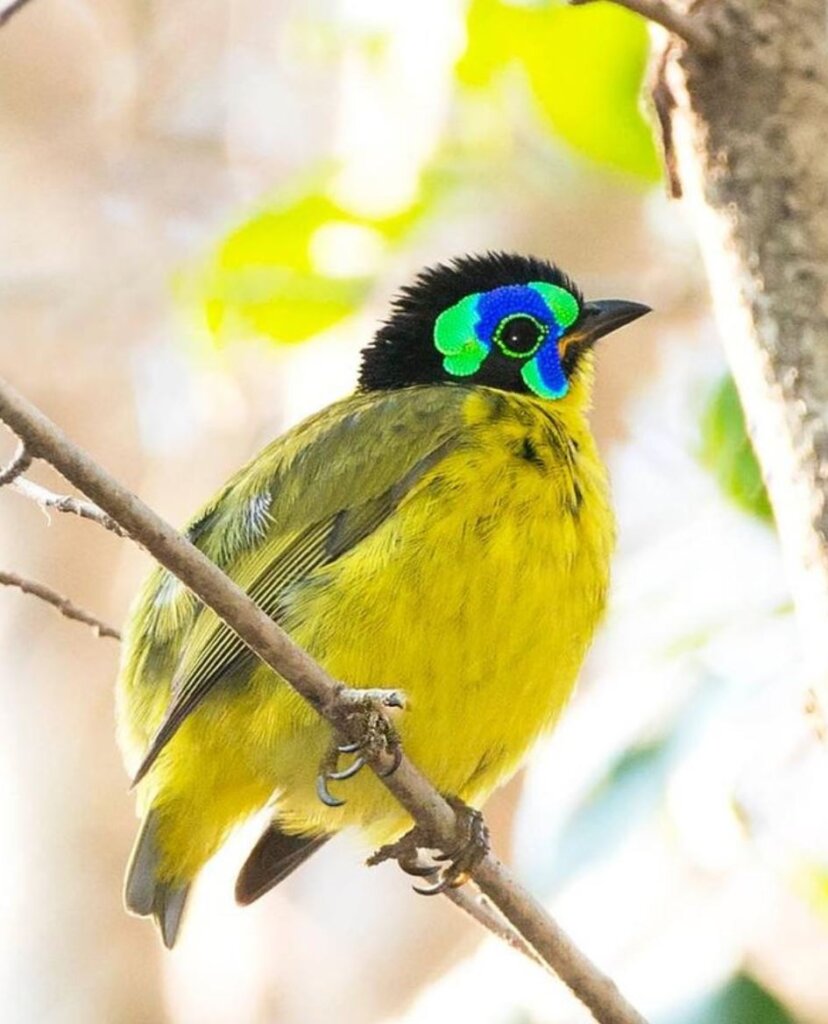
Schlegel’s asity breeds between October and December when the female forms a globular woven structure suspended from a branch 2 to 5 meters above the ground. The nest is made primarily of moss but sometimes also includes dead leaves and cobwebs. Not much is known about the breeding process.
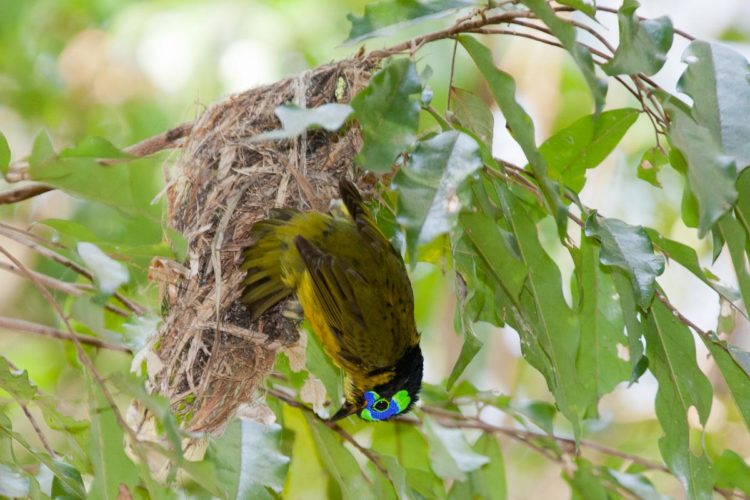
Because its habitat is heavily threatened by humans for grazing and timber, the bird’s population is declining and its classification is Near Threatened.
